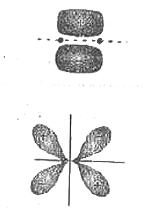The molecular structure of insulin was described by
Korenberg
Swaminathan
Richardson
Sanger
The correct Answer is:D
To answer the question regarding who described the molecular structure of insulin, we can break down the information into steps:
1. Understanding Insulin: Insulin is a hormone that plays a crucial role in regulating blood sugar levels by converting glucose into glycogen, a process known as glycogenesis.
2. Source of Insulin: Insulin is secreted by the beta cells of the pancreas. This is important to note as it gives context to the biological function of insulin.
3. Structure of Insulin: The molecular structure of insulin consists of chains of amino acids. Specifically, it has:
- An A chain with 21 amino acids.
- A B chain with 30 amino acids.
- A C chain, which is part of proinsulin (the inactive form of insulin) and is not present in the active form.
4. Key Scientist: The molecular structure of insulin was described by Frederick Sanger, a prominent scientist known for his work in biochemistry.
5. Elimination of Other Options: Other scientists mentioned, such as Korenberg, Swaminathan, and Richardson, are not associated with the description of the insulin structure.
6. Final Answer: Therefore, the correct answer to the question is that the molecular structure of insulin was described by Frederick Sanger.
- An A chain with 21 amino acids.
- A B chain with 30 amino acids.
- A C chain, which is part of proinsulin (the inactive form of insulin) and is not present in the active form.
Topper's Solved these Questions
Similar Questions
Knowledge Check
Insulin is a
AsugarBlipidCvitaminDhormone
Insulin is
View SolutionWhich of these statements about the molecular structure of myofilaments is ture?
View SolutionWhat is deoxyribose sugar? Give molecular structure of this sugar.
View SolutionStructure of protein insulin was first studied by
View SolutionDraw molecular structure of deoxyribose sugar.
View SolutionIn the structure of pro - insulin in humans disulphide bonds exist between
View SolutionThe molecular orbital shown below can be described respectively as

View Solution
